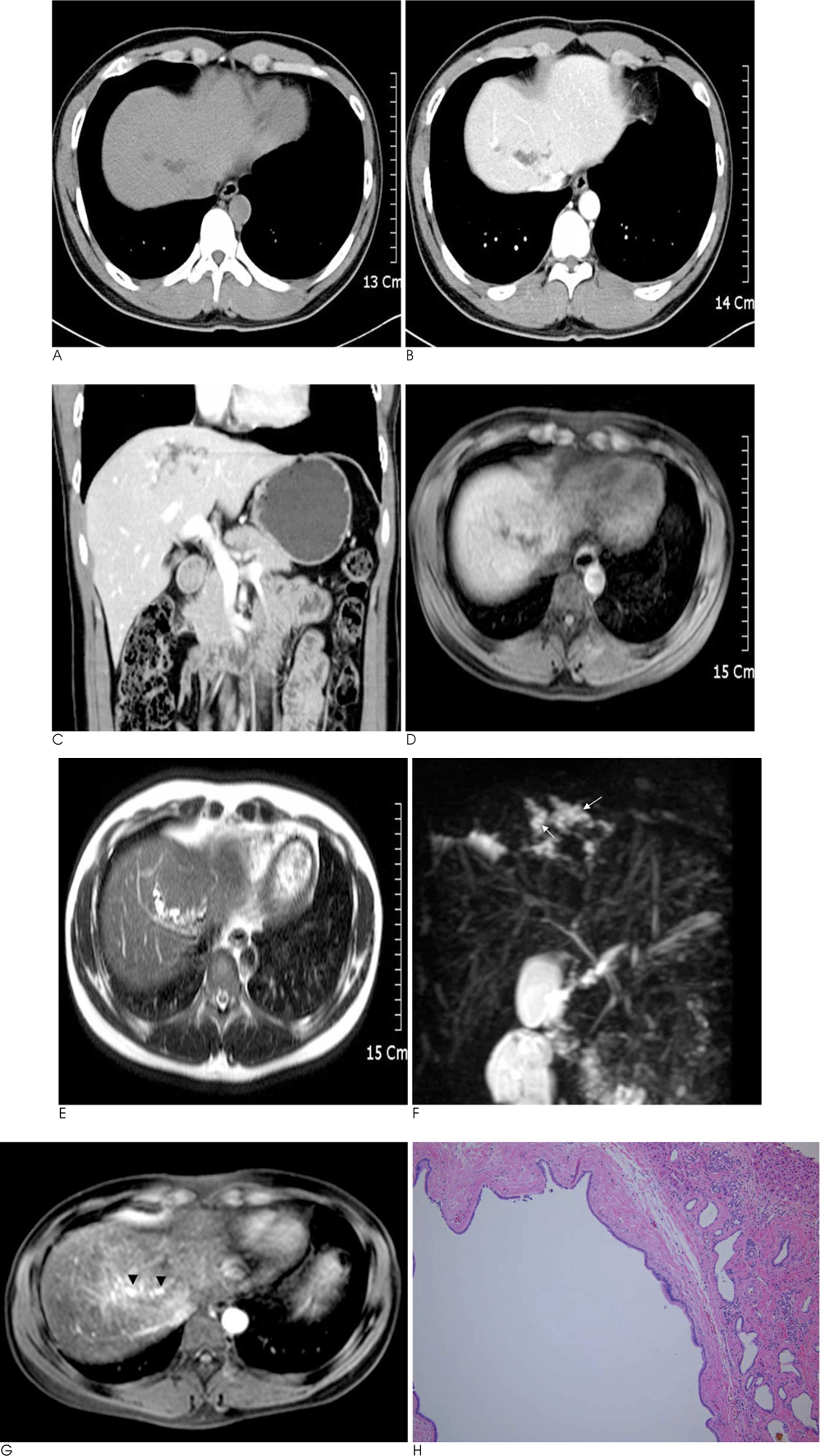J Korean Soc Radiol.
2010 Sep;63(3):249-253. 10.3348/jksr.2010.63.3.249.
Monolobar Caroli's Disease in Left Lobe of the Liver: A Case Report
- Affiliations
-
- 1Department of Radiology, Wonkwang University Hospital, Korea. yjyh@wonkwang.ac.kr
- KMID: 2097901
- DOI: http://doi.org/10.3348/jksr.2010.63.3.249
Abstract
- Caroli's disease is a rare congenital hepatobiliary disease characterized by multifocal segmental dilatation of the intrahepatic bile ducts and hepatic fibrosis that can cause bile duct stones, cholangitis, and cholangiocarcinoma. The disease may diffusely affect the liver or be localized to one lobe or segment. Less than 20% of all reported cases of Caroli's disease are the monolobar type. We report a case of Caroli's disease of the monolobar type, which was confined to segment 4a of the liver in a 30-year-old man. The disease was diagnosed by CT and Gd-EOB-DTPA enhanced MRI, and confirmed histopathologically after a hepatic lobectomy.
MeSH Terms
Figure
Reference
-
1. Desmet VJ. Congenital diseases of intrahepatic bile ducts: variations on the theme ductal plate malformation. Hepatology. 1992; 16:1069–1083.2. Verma SK, Mitchell DG. Images: Monolobar Caroli's disease. Indian J Radiol Imaging. 2007; 17:254–256.3. Dayton MT, Longmire WP Jr, Tompkins RK. Caroli's disease: a premalignant condition? Am J Surg. 1983; 145:41–48.4. Boyle MJ, Doyle GD, McNulty JG. Monolobar Caroli's disease. Am J Gastroenterol. 1989; 84:1437–1444.5. Kassahun WT, Kahn T, Wittekind C, Moössner J, Caca K, Hauss J, et al. Caroli's disease: liver resection and liver transplantation. Experience in 33 patients. Surgery. 2005; 138:888–898.6. Kil H, Choi EY, Jeong JI, Park CS, Park SM, Kim SH, et al. A case of simple type Caroli's disease confined to right lobe of the liver. Korean J Gastroenterol. 2007; 50:271–276.7. Kim WC, Bahk YW, Kim HK. Caroli's disease. J Korean Med Assoc. 1974; 17:73–77.8. Yoo SJ, Moon YS, Lee SW, Yang JH, Park SJ, Park JW, et al. A case of simple type Caroli's disease confined to one segment of the liver. Korean J Med. 2005; 68:448–452.9. Pavone P, Laghi A, Catalano C, Materia A, Basso N, Passariello R. Caroli's disease: evaluation with MR cholangiopancreatography (MRCP). Abdom Imaging. 1996; 21:117–119.10. Bollow M, Taupitz M, Hamm B, Staks T, Wolf KJ, Weinmann HJ. Gadolinium-ethoxybenzyl-DTPA as a hepatobiliary contrast agent for use in MR cholangiography: results of an in vivo phase-I clinical evaluation. Eur Radiol. 1997; 7:126–132.


